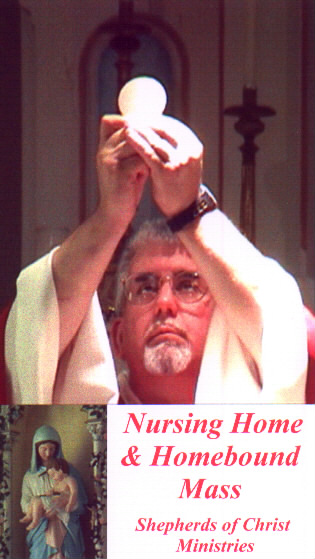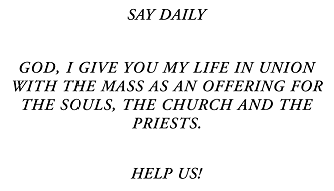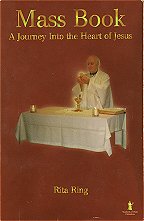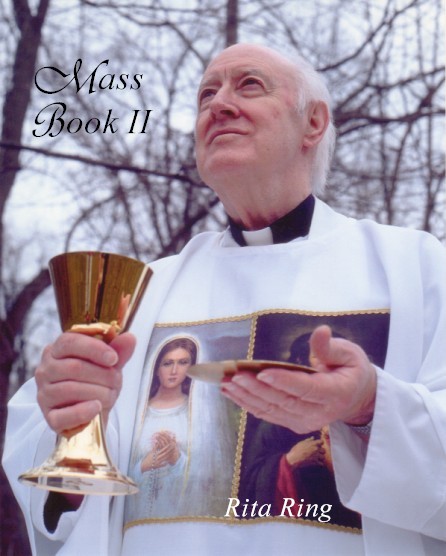c) The
Sacrifice of the Mass
Some
contemporary authors, while not necessarily de-emphasizing the sacrificial
nature of the Mass, are giving a renewed emphasis to the concept of the Mass
as banquet or meal. This is all to the good, as long as the sacrificial
structure is not allowed to recede to the background. In this regard it is
well for us to recall the mind of the early Church. Jungmann says: "The
first centuries of Christianity, which had built the framework for the
celebration of the Eucharist which is still followed today, had laid down two
basic thoughts: The Mass is the memorial of the Lord, and it is the sacrifice
of the Church. These two thoughts are expressed just as clearly and simply
today: Ď...calling to mind the blessed passion Ė we offer to your
sovereign majesty Ė this pure sacrifice.í "22
We should always unite the concepts of the Mass as sacrifice and the Mass as
meal by realizing that the eucharistic meal is an integral part of the
sacrifice. It is its conclusion.
We
should also be aware that the Mass is a covenant sacrifice. It is the
sacramental renewal of Christís covenant sacrifice. The Mass is the central
act of our covenant life in Christ, and therefore it embraces the four great
dimensions of covenant love. In Christ, by the action of the Holy Spirit, we
open ourselves in a special manner during the eucharistic liturgy to the
Fatherís love and we respond to that love. In Christ and His Spirit we also
pledge ourselves at Mass to go out in a deeper love to the members of the
People of God and to all men. We also commit ourselves anew to be open in
receiving the love of others. According to these various perspectives, the
Mass above all is an action of love.
1) Interior Oblation of the Mass
The
chief priest and victim of the Mass is the same as the priest and victim of
the Last Supper and Calvary, Christ Himself. Christ makes this interior
offering of Himself in the Mass for the same ends as were present in His own
unique sacrifice Ė adoration, thanksgiving, petition and satisfaction.
However, Christ is not the only priest at the Mass as He was at the Last
Supper and upon Calvary. All the members of the Mystical Body are priests
along with Christ. To be sure, there is a difference between the hierarchical
priesthood of bishops and priests and the universal priesthood of the
faithful. This difference is one of essence and not merely degree. The point
we wish to stress, however, is that the universal priesthood is a real
participation in Christís priesthood given through the sacraments of baptism
and confirmation.
This
concept of the priesthood of all the Churchís members is being stressed
today in a special manner.23 Jungmann,
the outstanding liturgical theologian, gives us reasons why this concept of
universal priesthood became relatively obscure for so many years. He states
that the concept of the Mass as the Churchís sacrifice faded into the
background as a result of the Reformation. The Reformers maintained that there
was only one sacrifice, the one which Christ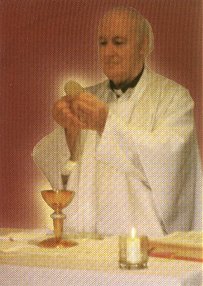 offered upon Calvary. To counteract this heresy the Council of Trent and the
theology consequent to it had to clarify that the Mass is a true sacrifice,
but not an absolutely independent one. It is a sacrifice relative to the
absolute one of Calvary and a representation of it. It was emphasized that the
priest of Calvary is also the chief priest of the Mass. Because of such
doctrinal controversies, the concept that Christ offers the Mass was alone
considered important. The concept that the Mass is also the sacrifice of the
Church practically disappeared. Finally, Jungmann notes that today we are
returning to the balanced view which meaningfully recognizes that the Mass is
not only the sacrifice of Christ, but also that of the Church.24
This stress on the Churchís part in the Mass is logically connected
offered upon Calvary. To counteract this heresy the Council of Trent and the
theology consequent to it had to clarify that the Mass is a true sacrifice,
but not an absolutely independent one. It is a sacrifice relative to the
absolute one of Calvary and a representation of it. It was emphasized that the
priest of Calvary is also the chief priest of the Mass. Because of such
doctrinal controversies, the concept that Christ offers the Mass was alone
considered important. The concept that the Mass is also the sacrifice of the
Church practically disappeared. Finally, Jungmann notes that today we are
returning to the balanced view which meaningfully recognizes that the Mass is
not only the sacrifice of Christ, but also that of the Church.24
This stress on the Churchís part in the Mass is logically connected 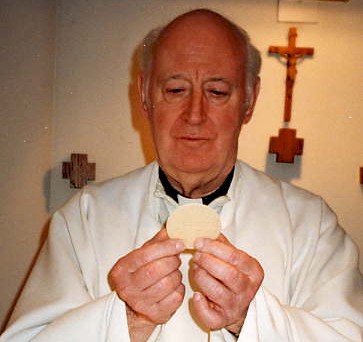 with
the contemporary emphasis on the priesthood of all the members of the People
of God.
with
the contemporary emphasis on the priesthood of all the members of the People
of God.
As
Christ is not the only priest of the Mass, neither is He the only victim.
Again, all the members of the Church are victims along with Christ. Various
Church documents attest to this. For instance, Pope Paul VI officially calls
attention to this: "It is a pleasure to add another point particularly
conducive to shed light on the mystery of the Church, that it is the whole
Church which, in union with Christ functioning as Priest and Victim, offers
the Sacrifice of the Mass and is offered in it."25
Therefore, the members of the People of God, united as priests to Christ the
high priest, offer a combined victim to the Father: Christ and themselves.
Such then in all its deep meaning and beauty is the first sacrificial element
of the Mass.
2) Ritual Oblation of the Mass
Just
as Christís interior offering of Himself was externalized in a ritual
oblation at the Last Supper, so is there an external, liturgical rite of the
Mass. The importance of this many-faceted exteriorization is brought out by
Vatican IIís 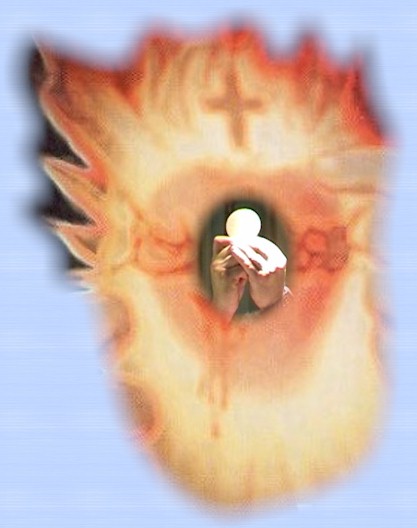 Constitution
on the Liturgy.
Constitution
on the Liturgy.
As
mentioned before, this exteriorization of the internal oblation is according
to manís social and corporeal nature. That it is in harmony with the social
part of man is evident from the fact that the external rite assembles the
People of God to worship together as a community. The individual members are
consequently enabled to help one another to achieve the proper worship of God.
The Constitution gives stress to this social aspect of the liturgy. It
states that the very nature of the liturgy demands that all the faithful be
led to a full and active liturgical participation. Such is in keeping with
their vocation as "a chosen race, a royal priesthood, a consecrated
nation" (1 P 2:9). The Constitution emphatically states that such
full and active participation on the part of all the people is the chief aim
of the liturgical renewal.26
As
also previously observed, the external rite is likewise according to manís
bodily nature. In the case of the Mass (and the sacraments also) we observe
that the very validity of the sacrifice depends on having the proper materials
for the offering Ė bread and wine Ė and on the use of the proper form of
consecration. The external, the ritual, the sensible, are indeed
indispensable. In all this we note the great law of incarnation. The
Incarnation established a set pattern for the redemption of the world,
redemption taken both objectively and subjectively. Christ redeemed the world
through His sacred humanity. This humanity is, then, the gateway to the
divinity, to eternal life.
As
Christís created humanity was indispensable for accomplishing the sacrifice
of the objective redemption, so are created things necessary for the
eucharistic sacrifice of the subjective redemption. This fact calls to mind
the thought of Teilhard de Chardin. Teilhard holds a world concept in which
all things, natural and supernatural, spiritual and material, are united in a
single and organic unity. The pole of this unity is the person of the
Incarnate Word, towards whom the whole of creation converges.27
In such a concept the law of incarnation is developed to the utmost, a fact
brought out by the following words of Teilhard: "Let us remember that the
supernatural nourishes itself on everything."28
At
various times in the history of Christian spirituality, the Church has been
plagued with an exaggerated spiritualism rising out of various sources. Such a
spiritualism, looking upon material things as more of a hindrance than a help,
is foreign to the true Christian spirit. A true theology of the Incarnation, a
theology which the Church so well concretizes in her liturgy, can lead to no
other conclusion.
It
is no accident that a meaningful incarnation spirituality is developing
concomitant with the liturgical renewal. Although we would not want to say
that the incarnational element outweighs the transcendent element in the
Churchís portrayal of the Christian life, yet she is leading the faithful of
all vocations to a deeper incarnationalism. The Church is accomplishing this
through a variety of ways. She is achieving this incarnationalism, for
instance, through the great social encyclicals, through the documents of
Vatican II, and, in reference to our present topic, through a revived liturgy.
There
is a deep significance, and a rich world of thought connected with the second
sacrificial element of the Mass: the ritual oblation which incarnates the
interior oblation.
3) Immolation of the Victim
Christ,
the chief victim of the Mass, has been immolated once and for all in the
offering of His own unique sacrifice. And yet, since the Mass is a true
sacrifice in its own right, we logically look for an unbloody immolation of
Christ the victim. Where do we find this immolation? Traditionally it has been
seen to be present in the double consecration of bread and wine. This double
consecration symbolizes the separation of Christís blood from His body, and,
consequently, symbolizes His death. Pius XIIís encyclical, Mediator Dei,
states: "Thus the commemorative representation of His death, which
actually took place on Calvary, is repeated in every Sacrifice of the altar,
seeing that Jesus Christ is symbolically shown by separate symbols to be in a
state of victimhood."29
Jungmann reminds us of the importance of this sacramental immolation of
Christ. While admitting and even stressing the importance of giving the
"meal symbolism" its proper place in the Mass, Jungmann calls for a
priority of sacrificial symbolism: "It is quite another question whether
or not it is necessary or even correct to regard the meal symbolism as the
decisive and fundamental thing in the outward transaction of the Mass. If the
Mass is a sacrifice then this must find appropriate expression in the outward
picture too; for sacrifice is essentially a demonstrative action, the symbolic
representation of inward readiness to give oneself."30
Durrwell,
a biblical theologian, also highlights the importance of the Massís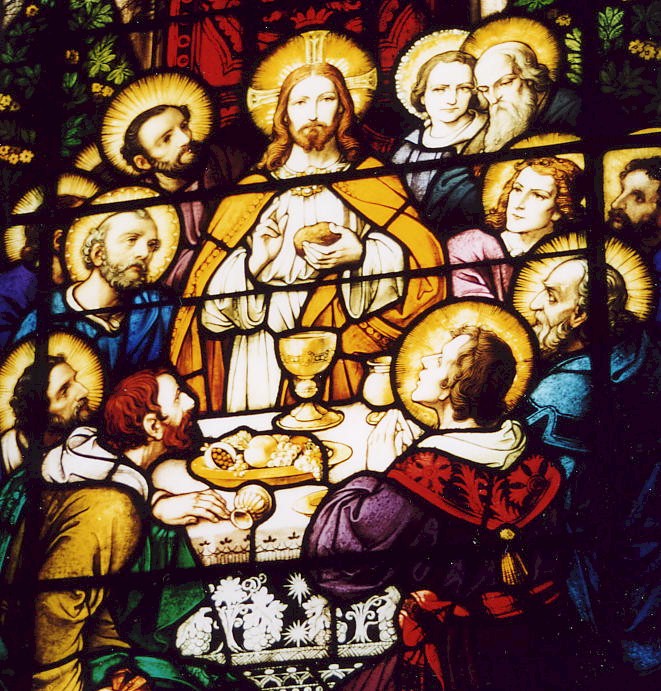 immolation. He seems to say that Christís immolation is symbolized by the
very words of consecration. He says that the Last Supper and its
commemoration, the Mass, are sacrificial meals. Consequently, "...Christ
appears in the victim state. He gives them to drink "the blood of the new
covenant, shed for manyí (Matt, Mark), blood of sacrifice as the
establishment of the old covenant required (Exod xxiv, 8) shed at the moment
of drinking."31
immolation. He seems to say that Christís immolation is symbolized by the
very words of consecration. He says that the Last Supper and its
commemoration, the Mass, are sacrificial meals. Consequently, "...Christ
appears in the victim state. He gives them to drink "the blood of the new
covenant, shed for manyí (Matt, Mark), blood of sacrifice as the
establishment of the old covenant required (Exod xxiv, 8) shed at the moment
of drinking."31
However,
as we have said, Christ is not the only victim of the eucharistic sacrifice.
The members of His Body, the Church, are also victims along with Christ. Those
members must also be in a state of victimhood. As with Christ, they cannot
undergo a bloody immolation. Their immolation must also be a mystical one. How
is this accomplished? We can look to two passages of the encyclical Mediator
Dei for thoughts on such a mystical immolation. In one passage we read
that pride, anger, impurity and all evil desires are to be mystically slain.
As the Christian stands before the altar, he should bring with him a
transformed heart, purified as much as possible from all trace of sin.32
Positively considered, such a transformation means that the Christian is
striving to grow in the supernatural life by all possible means, so as to
present himself always as an acceptable victim to the heavenly Father.
In
another passage of the same encyclical this mystical immolation of Christís
members is further developed. To be a victim with Christ means that the
Christian must follow the gospel teaching concerning self-denial, that he
detest his sins and make satisfaction for them. In brief, the Christianís
victimhood means that he experiences a mystical crucifixion so as to make
applicable to his own life the words of St. Paul, "I have been crucified
with Christ... (Ga 2:19)33
Jungmann
has a beautiful passage concerning the Christianís eucharistic immolation.
He states: "Every sacrament serves to develop in us the image of Christ
according to a specified pattern which the sacramental sign indicates. Here
the pattern is plainly shown in the double formation of the Eucharist; we are
to take part in His dying, and through His dying are to merit a share in His
life. What we here find anchored fast in the deepest center of the
Mass-sacrifice is nothing else than the ideal of moral conduct to which the
teaching of Christ in the Gospel soars; the challenge to an imitation of Him
that does not shrink at sight of the Cross; a following after Him that is
ready to lose its life in order to win it; the challenge to follow Him even,
if need be, in His agony of suffering and His path of death, which are here in
this mystery so manifestly set before us."34
Summarily,
then, we become victims with Christ by lovingly conforming our wills to the
Fatherís will in all things. Such conformity was the essence of Christís
sacrifice, of His victimhood, and of His immolation. A similar conformity must
be in the victimhood and the immolation of Christís members. This mystical
immolation is a lifelong process. The ideal is that each Mass participated in
by the Christian should mark a growth in his victimhood. The true Christian
desires to die more and more to all which is not according to Godís will so
that he may become an ever more perfect victim with Christ.
4) The Fatherís Acceptance of the
Eucharistic Sacrifice
It
has been observed that if sacrifice is to have its desired effect, it must be
accepted by God. That the Father always accepts the eucharistic sacrifice is
certain. For the principal priest and victim is Christ Himself, always
supremely acceptable to the Father. As for the subordinate priests and
victims, they are, taken together, the People of God, the Church herself.
There
is always an acceptance on the Fatherís part even as regards this
subordinate priesthood and victimhood of the Mass. For even though the Mass
may be offered through the sacrilegious hands of an unworthy priest, there is always a basic holiness in the Church pleasing to God. Because of such
holiness the Father always accepts the Churchís sacrificial offering, for
the Mass is the sacrifice of the whole Church, and cannot be fundamentally
vitiated by the unworthiness of any particular member or members, even if that
member be the officiating priest.
always a basic holiness in the Church pleasing to God. Because of such
holiness the Father always accepts the Churchís sacrificial offering, for
the Mass is the sacrifice of the whole Church, and cannot be fundamentally
vitiated by the unworthiness of any particular member or members, even if that
member be the officiating priest.
What
do we say concerning the Fatherís acceptance of the sacrificial offering of
the individual Christian? Such an offering will be acceptable in proportion to
the Christianís loving conformity of will to the Fatherís will. Speaking
of the Christianís participation in the Mass, Jungmann says: "It
follows that an interior immolation is required of the participants, at least
to the extent of readiness to obey the law of God in its seriously obligatory
commandments, unless this participation is to be nothing more than an outward
appearance."35
Having
considered in successive sections the immolation and acceptance elements of
the Mass, we should consider the vital link between these two. For just as the
two are inseparably connected in Christís sacrifice, so are they also united
in the Churchís sacrifice of the Mass.
|
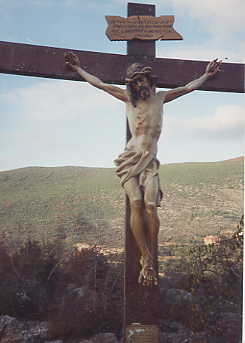
death |
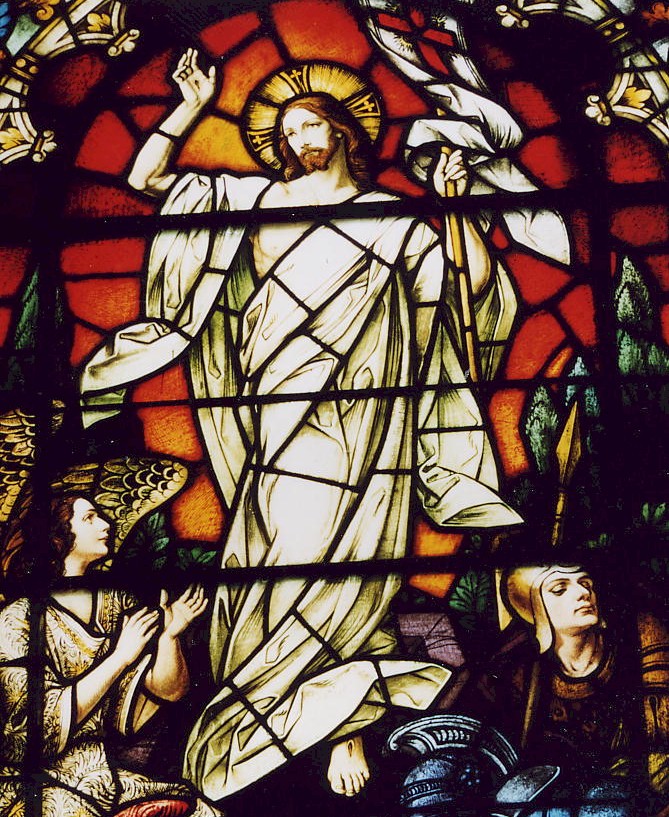
resurrection |
In
Christ we equated the immolation of His sacrifice with His passion-death, and
the acceptance element with His Resurrection. Uniting these two mysteries of
death-resurrection, we spoke of Christís paschal mystery. We have seen that
this mystery had been prefigured by the Jewish pasch and exodus, component
parts of the Jewish peopleís transition to a new and more perfect life. In
the case of Christ, we considered His paschĖHis passoverĖto be a
transition from the limitations of His mortal life to the state of resurrected
glory. We speak of Christís mortal humanity as having exercised limitations
upon Him in this sense, that, although He Himself was completely free from
sin, He had exposed Himself to the conditions of a sin-laden world through His
human nature. In His death-resurrection He changed all this as He conquered
sin, as He redeemed us, as He passed to the state of glory with His
Father.
What
happened in Christ also occurs in His Mystical Body, the Church. The Church
and Her members experience their own transition from death to resurrection.
The entire Church and the individual Christian express, through the Mass, a
willingness to grow in the participation in Christís death. The Father
accepts this willingness and gives an increase in the grace-life, a greater
share in Christís Resurrection. This process happened within a short span of
time in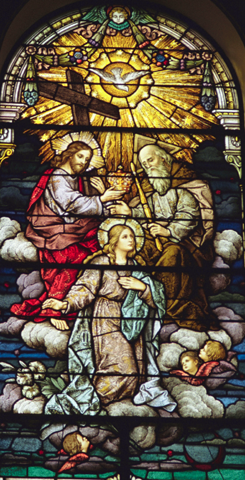 Christís life. In the life of the Church it continually takes place until
Christís second coming. The Church, with her grace-life of holiness, has
already partially achieved her resurrection, but not completely, even though
she continues to grow in grace. St. Paul bears witness to this: "...but
all of us who possess the first-fruits of the Spirit, we too groan inwardly as
we wait for our bodies to be set free." (Rm 8:23).
Christís life. In the life of the Church it continually takes place until
Christís second coming. The Church, with her grace-life of holiness, has
already partially achieved her resurrection, but not completely, even though
she continues to grow in grace. St. Paul bears witness to this: "...but
all of us who possess the first-fruits of the Spirit, we too groan inwardly as
we wait for our bodies to be set free." (Rm 8:23).
Vatican
IIís Constitution on the Church beautifully portrays this fused state
of death-resurrection which the Church in her members experiences here below
as she awaits the fullness of the resurrection in the world to come: "For
this reason we, who have been made to conform with him, who have died with him
and risen with him, are taken up into the mysteries of his life, until we will
reign together with him... While still pilgrims on earth, tracing in trial and
in oppression the paths he trod, we are anointed with his sufferings as the
body is with the head, suffering with him, that with him we may be
glorified..."36
5) Partaking of the Eucharistic Meal
The
cycle of the eucharistic sacrifice is completed as the priest and faithful 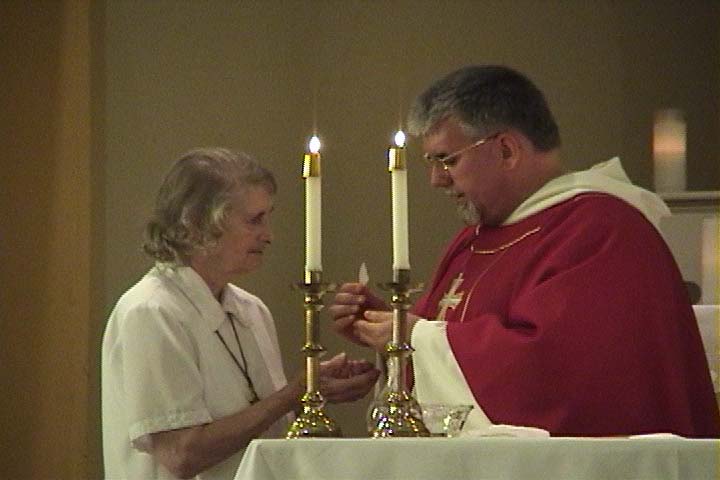 partake
of Christ the paschal lamb. The People of God have given Christ to the Father.
Now the Father gives Christ to the Churchís members in the eucharistic meal.
Although the priest alone must communicate to assure the integrity of the
sacrifice, it is highly desirable, of course, that all present partake of the
eucharist.
partake
of Christ the paschal lamb. The People of God have given Christ to the Father.
Now the Father gives Christ to the Churchís members in the eucharistic meal.
Although the priest alone must communicate to assure the integrity of the
sacrifice, it is highly desirable, of course, that all present partake of the
eucharist.
In
the sacrifices of old, the victim of the sacrificial banquet was considered in
some sense divine by the fact that it had been offered to the divinity. In the
sacrifice of the new covenant we receive divinity itself through the sacred
humanity. With such a marvelous conclusion to the eucharistic sacrifice, the
fruits of Christís sacrifice of Calvary are continually experienced.
There
are other truths to be considered under the paschal meal aspect of the Mass.
One of these is the concept of the eucharist as sign and cause of unity. Von
Hildebrand comments on this: "All receive the one body of the Lord, all
are assimilated into the one Lord. Even if we leave aside the supreme
ontological supernatural unity which is realized here, the very act of
undergoing this experience represents an incomparable communion-forming
power."37
Through
the sharing of the one paschal lamb, the Christian assembly has thus been vividly reminded of their oneness in Christ. Yet this is a oneness in
plurality. For each Christian is a member of the one Body of Christ in his own
unique way. He has been called upon to assimilate Christ according to his own
personality, vocation and graces. Consequently, just as the members of the
People of God are reminded of their unity at Mass, so are they made aware of
their own uniqueness as they depart from the eucharistic assembly, each
carrying Christ to his own particular environment according to his own
individual personality.
been vividly reminded of their oneness in Christ. Yet this is a oneness in
plurality. For each Christian is a member of the one Body of Christ in his own
unique way. He has been called upon to assimilate Christ according to his own
personality, vocation and graces. Consequently, just as the members of the
People of God are reminded of their unity at Mass, so are they made aware of
their own uniqueness as they depart from the eucharistic assembly, each
carrying Christ to his own particular environment according to his own
individual personality.
end
of excerpt from Response in Christ
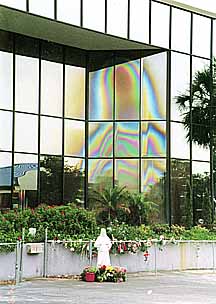
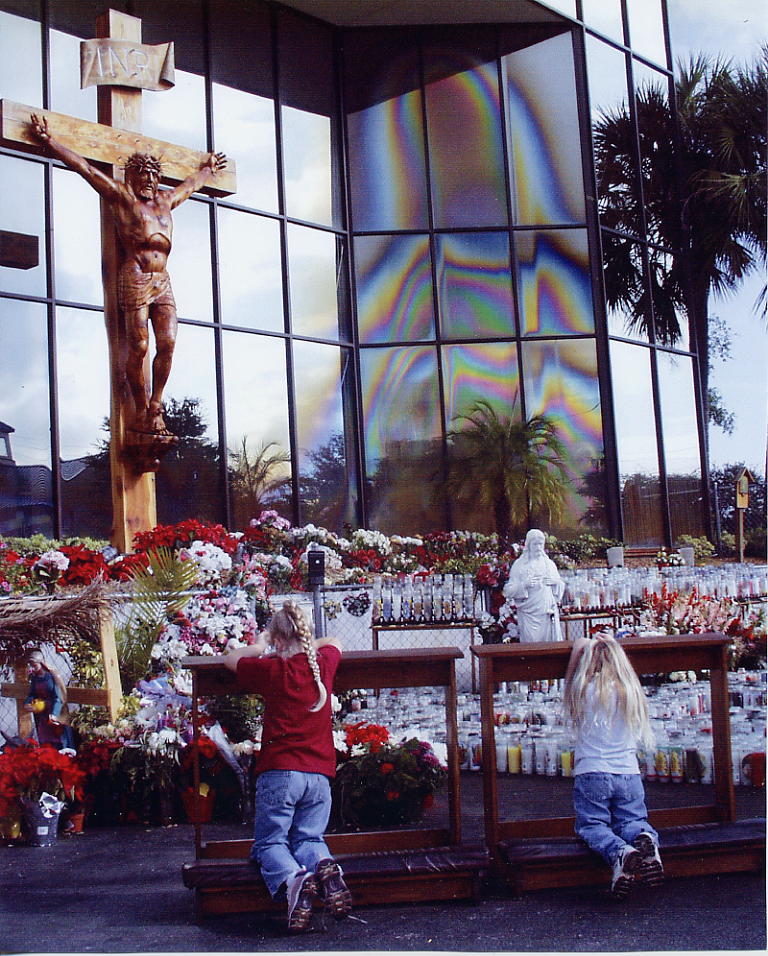

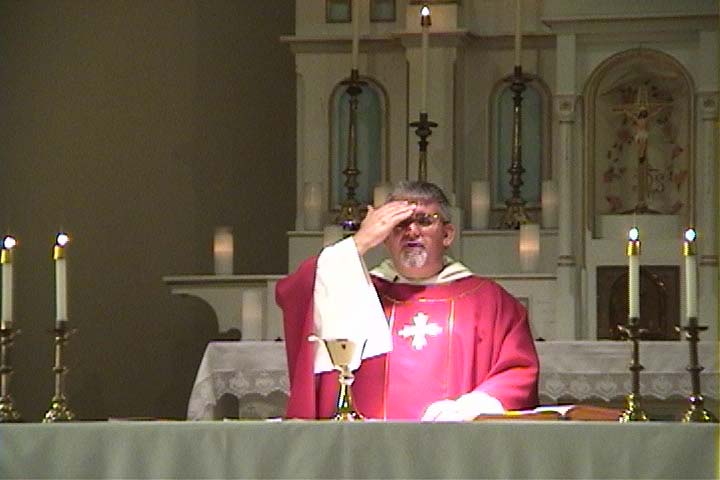
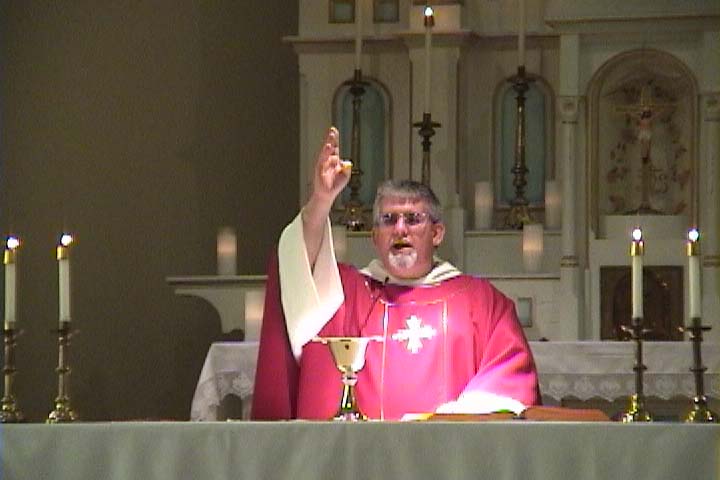
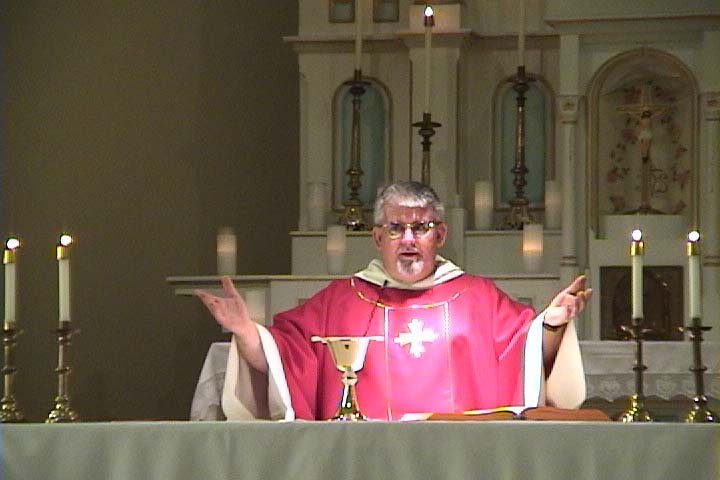
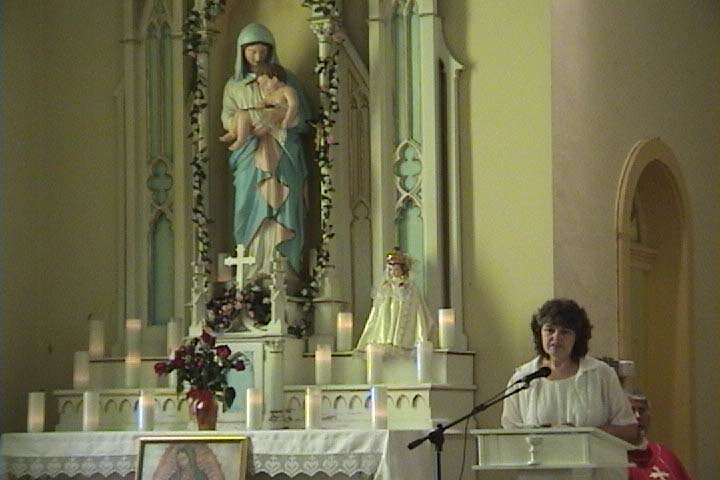
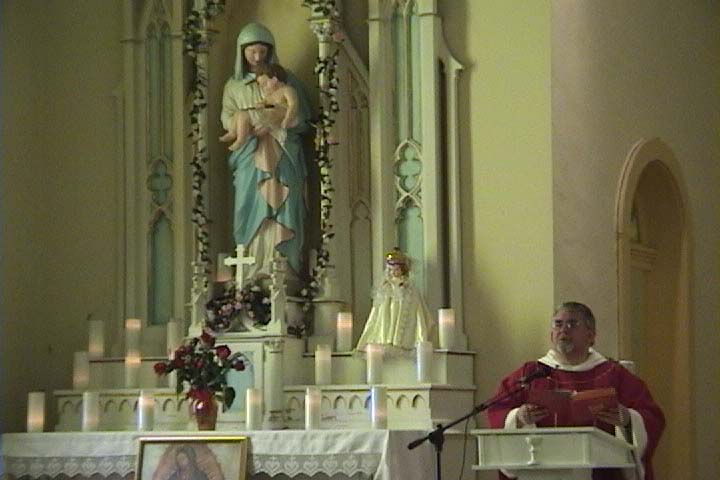
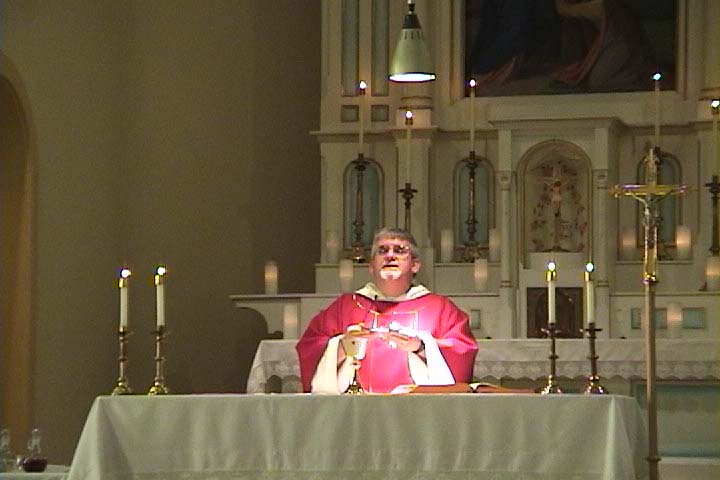
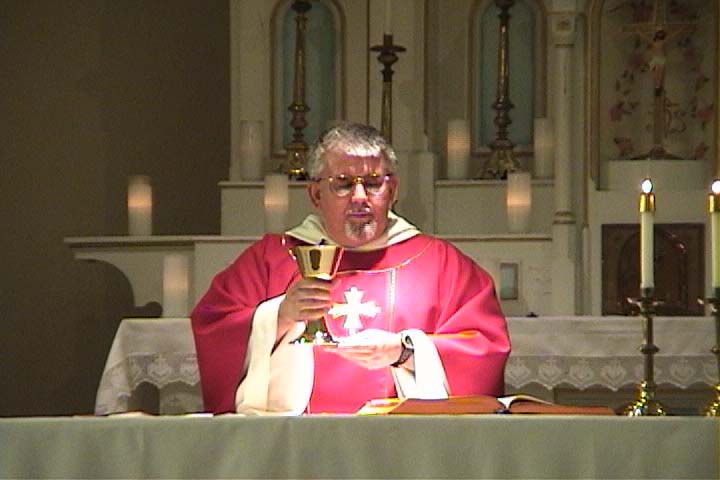
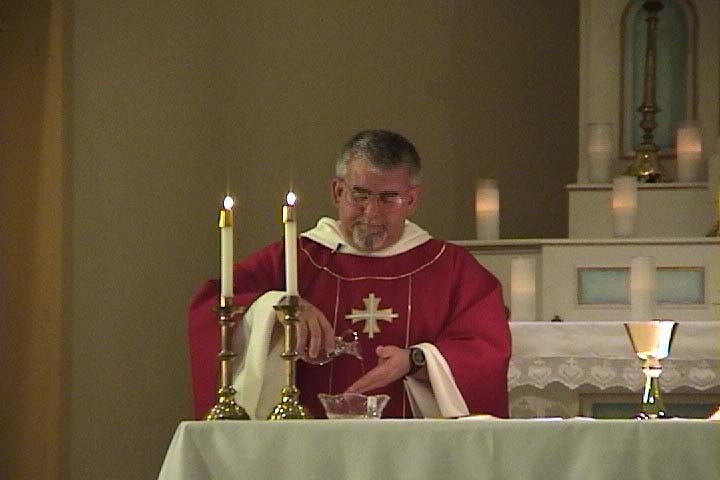
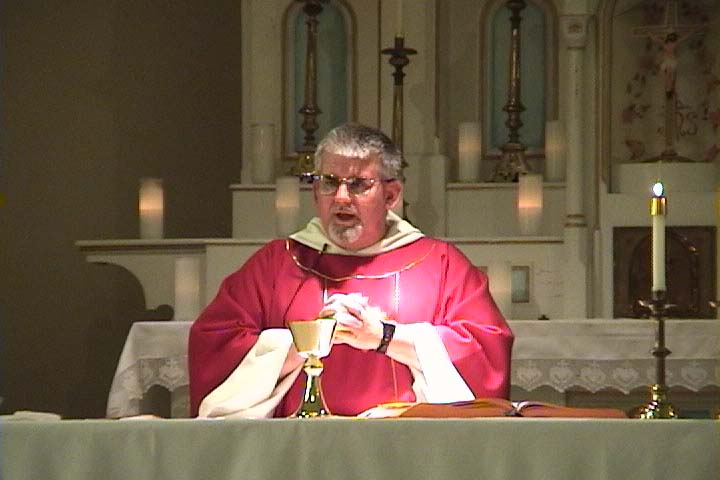
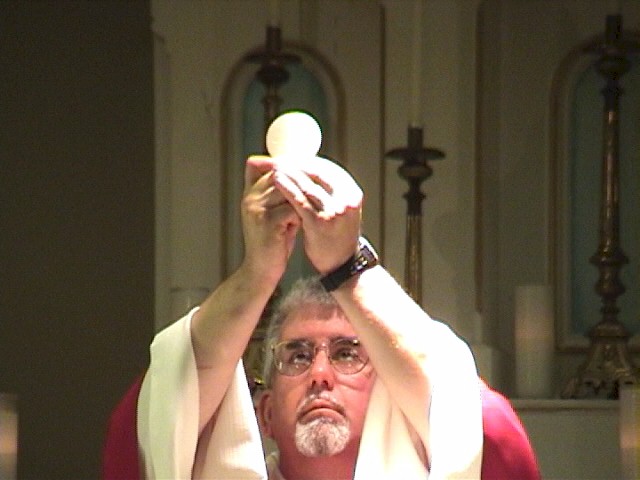
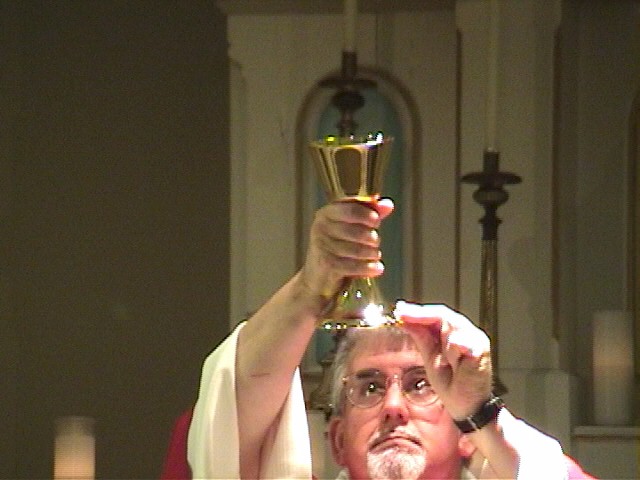
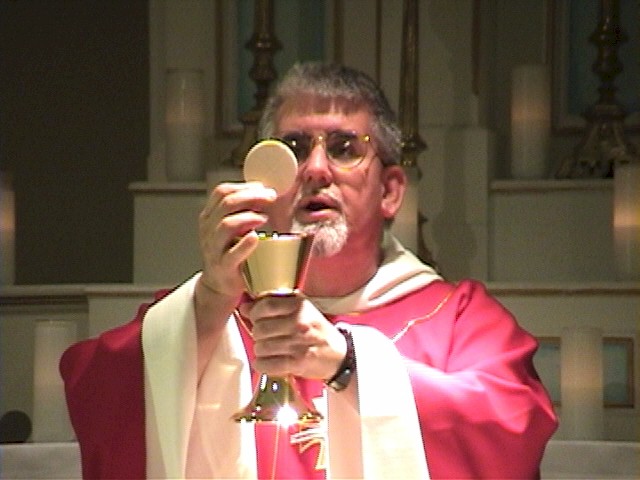
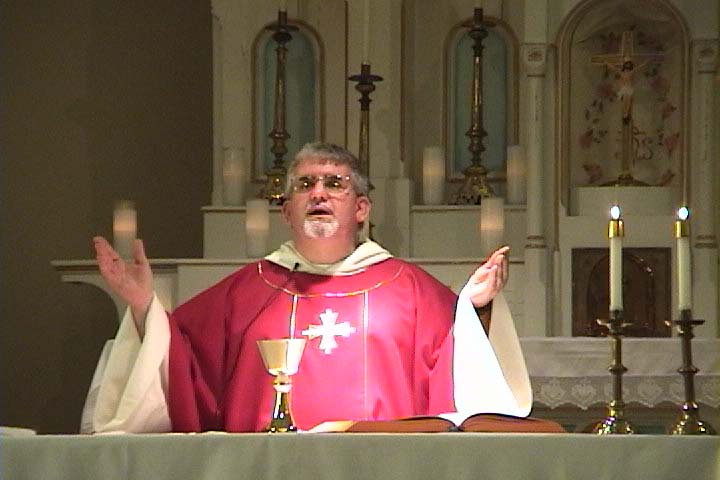
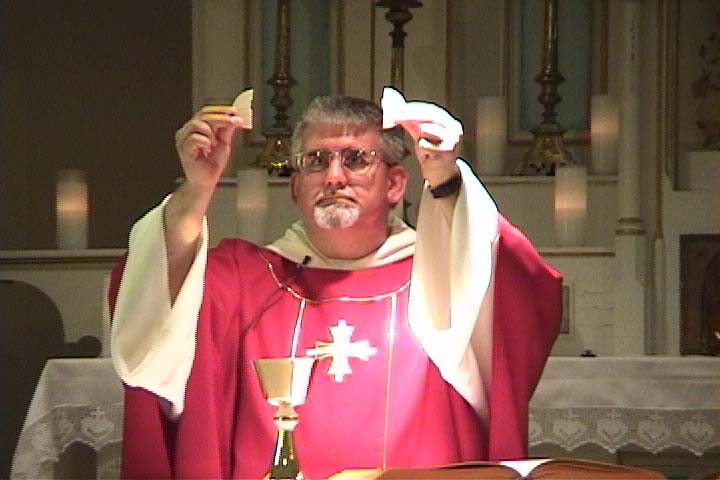

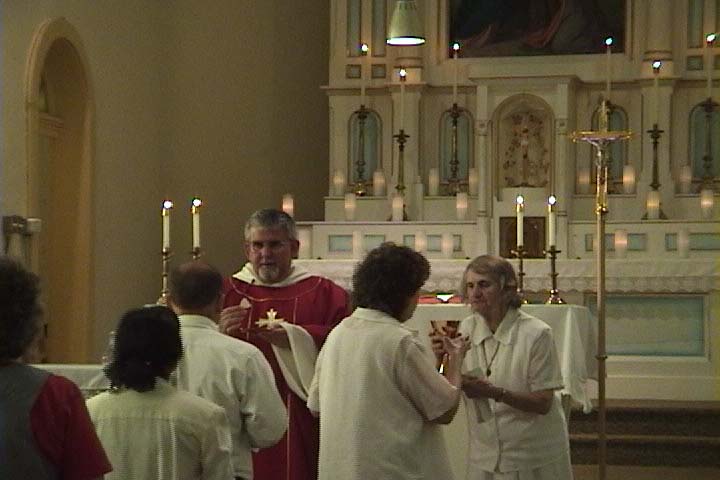
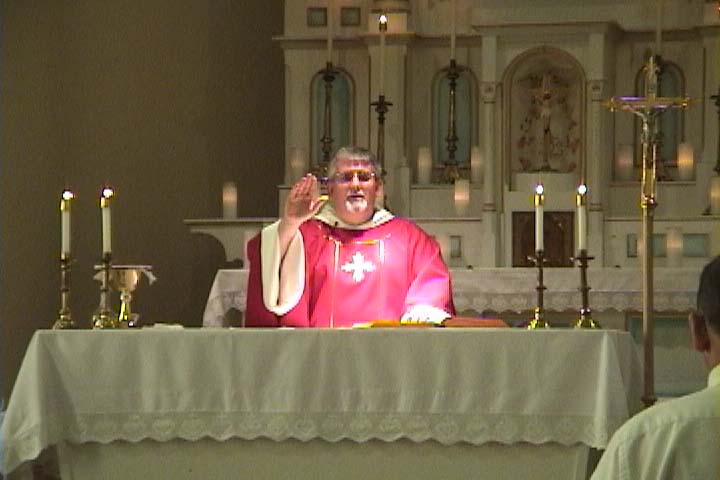
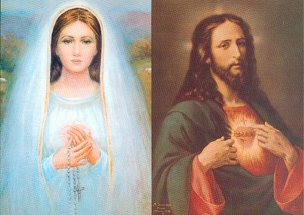
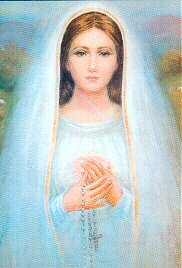
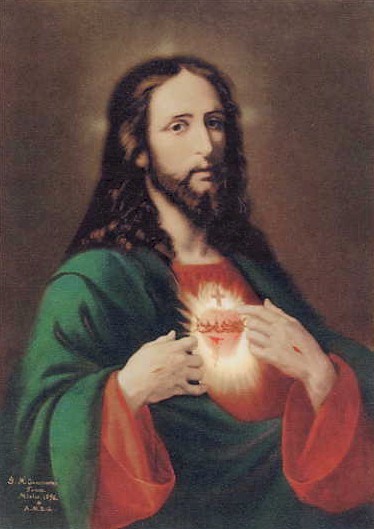 permeate my soul. Help me to sit in silence with You and let You work in my
heart.
permeate my soul. Help me to sit in silence with You and let You work in my
heart. offered upon Calvary. To counteract this heresy the Council of Trent and the
theology consequent to it had to clarify that the Mass is a true sacrifice,
but not an absolutely independent one. It is a sacrifice relative to the
absolute one of Calvary and a representation of it. It was emphasized that the
priest of Calvary is also the chief priest of the Mass. Because of such
doctrinal controversies, the concept that Christ offers the Mass was alone
considered important. The concept that the Mass is also the sacrifice of the
Church practically disappeared. Finally, Jungmann notes that today we are
returning to the balanced view which meaningfully recognizes that the Mass is
not only the sacrifice of Christ, but also that of the Church.24
This stress on the Churchís part in the Mass is logically connected
offered upon Calvary. To counteract this heresy the Council of Trent and the
theology consequent to it had to clarify that the Mass is a true sacrifice,
but not an absolutely independent one. It is a sacrifice relative to the
absolute one of Calvary and a representation of it. It was emphasized that the
priest of Calvary is also the chief priest of the Mass. Because of such
doctrinal controversies, the concept that Christ offers the Mass was alone
considered important. The concept that the Mass is also the sacrifice of the
Church practically disappeared. Finally, Jungmann notes that today we are
returning to the balanced view which meaningfully recognizes that the Mass is
not only the sacrifice of Christ, but also that of the Church.24
This stress on the Churchís part in the Mass is logically connected  with
the contemporary emphasis on the priesthood of all the members of the People
of God.
with
the contemporary emphasis on the priesthood of all the members of the People
of God. Constitution
on the Liturgy.
Constitution
on the Liturgy.
 immolation. He seems to say that Christís immolation is symbolized by the
very words of consecration. He says that the Last Supper and its
commemoration, the Mass, are sacrificial meals. Consequently, "...Christ
appears in the victim state. He gives them to drink "the blood of the new
covenant, shed for manyí (Matt, Mark), blood of sacrifice as the
establishment of the old covenant required (Exod xxiv, 8) shed at the moment
of drinking."31
immolation. He seems to say that Christís immolation is symbolized by the
very words of consecration. He says that the Last Supper and its
commemoration, the Mass, are sacrificial meals. Consequently, "...Christ
appears in the victim state. He gives them to drink "the blood of the new
covenant, shed for manyí (Matt, Mark), blood of sacrifice as the
establishment of the old covenant required (Exod xxiv, 8) shed at the moment
of drinking."31 always a basic holiness in the Church pleasing to God. Because of such
holiness the Father always accepts the Churchís sacrificial offering, for
the Mass is the sacrifice of the whole Church, and cannot be fundamentally
vitiated by the unworthiness of any particular member or members, even if that
member be the officiating priest.
always a basic holiness in the Church pleasing to God. Because of such
holiness the Father always accepts the Churchís sacrificial offering, for
the Mass is the sacrifice of the whole Church, and cannot be fundamentally
vitiated by the unworthiness of any particular member or members, even if that
member be the officiating priest.

 Christís life. In the life of the Church it continually takes place until
Christís second coming. The Church, with her grace-life of holiness, has
already partially achieved her resurrection, but not completely, even though
she continues to grow in grace. St. Paul bears witness to this: "...but
all of us who possess the first-fruits of the Spirit, we too groan inwardly as
we wait for our bodies to be set free." (Rm 8:23).
Christís life. In the life of the Church it continually takes place until
Christís second coming. The Church, with her grace-life of holiness, has
already partially achieved her resurrection, but not completely, even though
she continues to grow in grace. St. Paul bears witness to this: "...but
all of us who possess the first-fruits of the Spirit, we too groan inwardly as
we wait for our bodies to be set free." (Rm 8:23). been vividly reminded of their oneness in Christ. Yet this is a oneness in
plurality. For each Christian is a member of the one Body of Christ in his own
unique way. He has been called upon to assimilate Christ according to his own
personality, vocation and graces. Consequently, just as the members of the
People of God are reminded of their unity at Mass, so are they made aware of
their own uniqueness as they depart from the eucharistic assembly, each
carrying Christ to his own particular environment according to his own
individual personality.
been vividly reminded of their oneness in Christ. Yet this is a oneness in
plurality. For each Christian is a member of the one Body of Christ in his own
unique way. He has been called upon to assimilate Christ according to his own
personality, vocation and graces. Consequently, just as the members of the
People of God are reminded of their unity at Mass, so are they made aware of
their own uniqueness as they depart from the eucharistic assembly, each
carrying Christ to his own particular environment according to his own
individual personality.